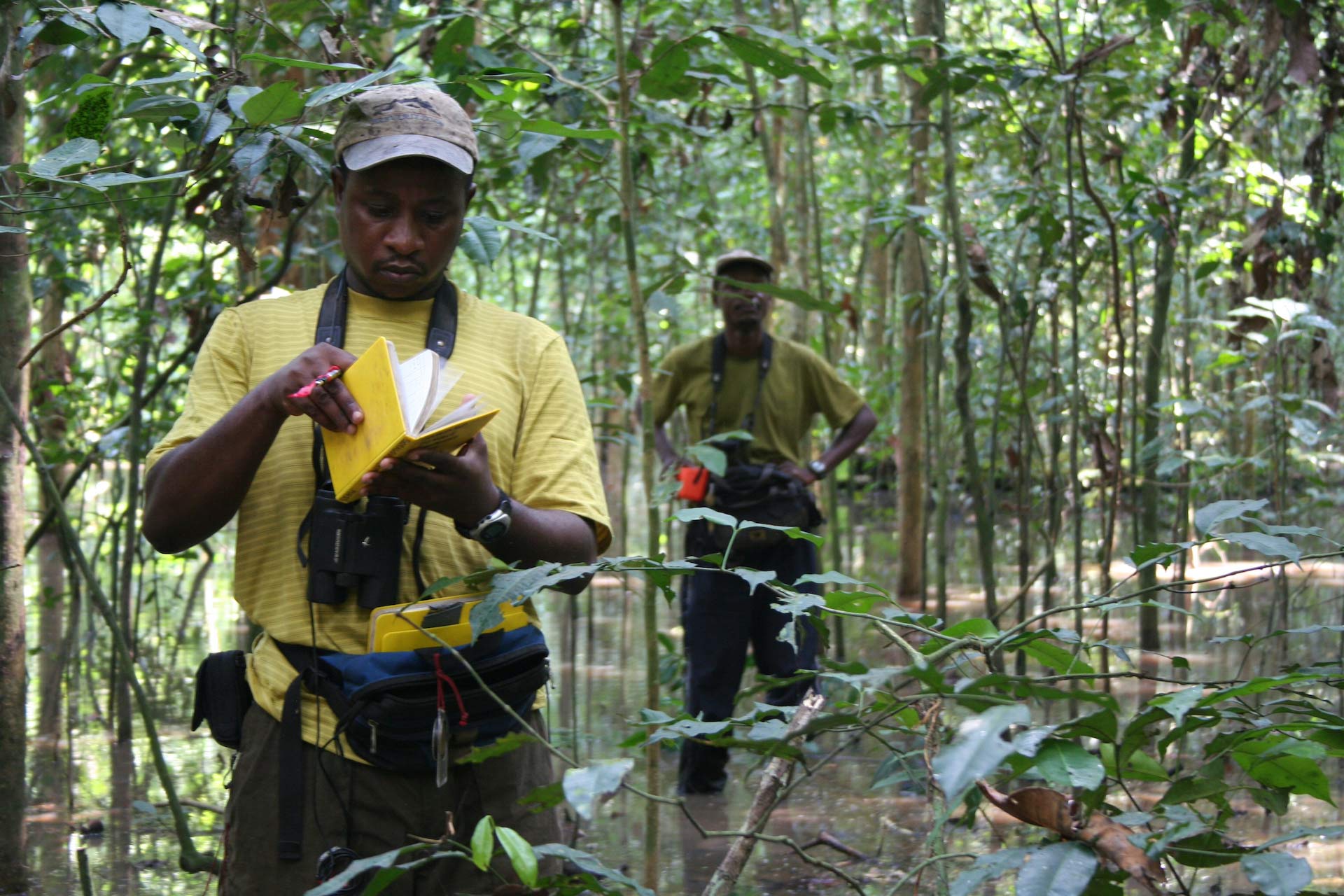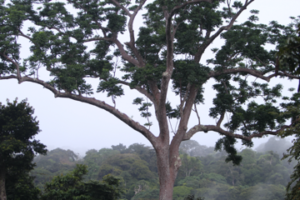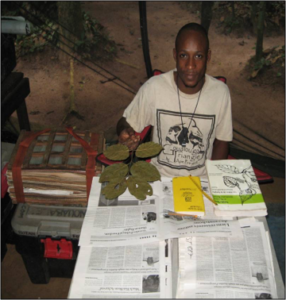
Science
- Study the complex societies of Africa’s iconic great apes
- Partner with local indigenous communities
- Monitor gorillas and chimpanzees across landscapes
- Combat emerging diseases and anthropogenic health risks
- Survey biodiversity and tool-use with passive remote field cameras
- Quantify forest diversity, structure, seasonality and carbon
- Species Identification
Quantify forest diversity, structure, seasonality and carbon
Forest structure, tree diversity and seasonality are major forces driving chimpanzee and gorilla behavior and abundances. GTAP has established permanent botanical plots inside and outside the NNNP to investigate how road development and multiple cycles of selective logging changes forest structure. We are particularly interested in understanding the impact on trees and terrestrial herbaceous vegetation. This information is related to ape survival prospects, forestry certification standards, and changes in above ground biomass and carbon sequestration potentials.


The intact forests of the Goualougo and Djéké Triangles contain relatively high carbon stocks, as indicated by our carbon estimates from the largest tree classes. A key parameter for estimating carbon emissions and climate change scenarios is quantification of aboveground biomass (AGB). Empirical estimates of AGB based on ground-truthed data for this region are rare, but increasingly called upon for improving models of climate change mitigation strategies. Measurements from our botanical surveys of the largest tree class (>80 cm DBH) provide an initial assessment of biomass and carbon sequestered in the Djéké forests.

